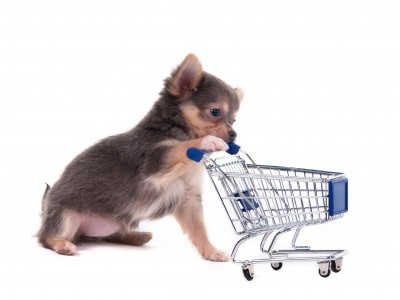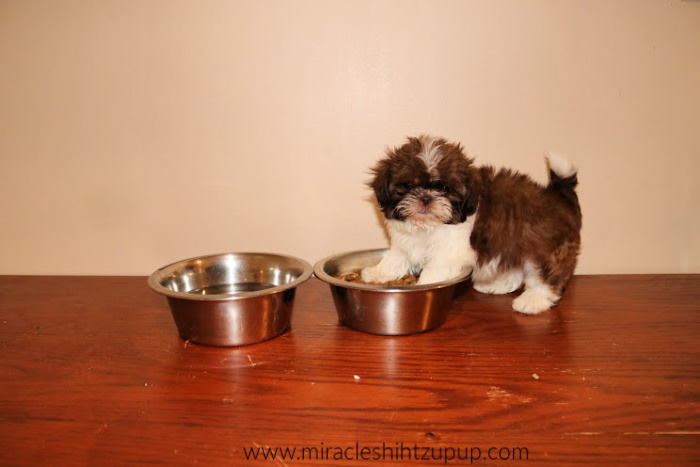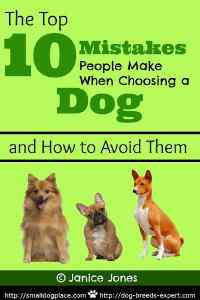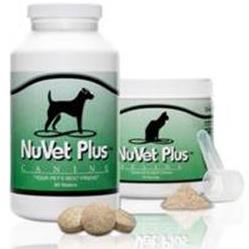- Small Dog Place Home
- About Puppies
- Puppy Dog Supplies
Puppy Dog Supplies: Checklist for the New Puppy or Dog Owner
by Janice Jones
Need a puppy dog supplies list for that shopping spree you're planning? This is the fun part of getting a new puppy, but also a costly activity. We thought we’d help by giving you a ready prepared dog supply checklist.
I often wonder why more people don’t give their friends a puppy or dog shower. Wouldn’t that help heal the bank account? There is so much to prepare, but having the essentials right from the start helps the transition to new puppy parenthood smooth.
Before the licking, yelping, and puppy kisses take over your life, here is the list of puppy dog supplies we prepared to help make those first few days a success.

Puppy Dog Supplies: Item 1: Dog Toys
Chew toys are a MUST if you are getting a puppy and adult dogs love toys as well. Puppies love to chew so a wide assortment of things that are appropriate for them to chew will help keep your shoes and furniture looking new for a while longer.
There are plenty of age-appropriate and size-recommended dog chew toys on the market. Remember small dogs have small mouths, so forget those large balls and opt for a smaller version of a tennis ball.
For small breed dogs, the chew toys need to be small and ones that they can sink their teeth into easily.
It might be cute to purchase that foot long raw hide bone, but save your money. Your tiny dog will likely not give it a second look. Look for durability. Cheap, soft rubber toys might look cute, but may be ripped apart quickly and possibly ingested. What to buy? Consider these toys as a good start:
- Ball
- Rope toy
- Chew toys such as Nylabone
- Puzzle toy such as a Kong toy
- Soft toy with squeaker or different sounds
A word of warning: Puppy Dog Supplies
Monitor your puppy during playtime and remove any destroyed toys immediately
Puppy Dog Supplies: Treats
If you want to begin training, you will need Dog treats to help make it easier. “If you want to,” suggests you have a choice, and that is really not the case.
Training now-a-days involves a positive reinforcement approach where dog treats serve as the reinforcement. Because it’s easy to overdo, make sure dog treats provide a tiny bit of flavor, not a meal replacement.
A word of warning:
Adopting an 8 week old puppy? The puppy might not have been introduced to treats yet, so when shopping, buy only a small bag of tiny mouth size treats.
Puppy Dog Supplies: Bowls

Dogs need a food that is appropriate for their size and developmental stage.
Puppy foods are designed to provide adequate nutrition for the rapid growth phase without overdoing it on the calorie count. It is important to continue to feed your dog or puppy the same food that they have been eating, gradually replacing their diet with the food of your choice.
No puppy dog supplies list would be complete without bowls that can be easily washed and sanitized. Bowls made from stainless steel or ceramic make the best choice for food and water. Many people with small breed dogs prefer to use water bottles rather than bowls. Water bottles such as those sold for use with rabbits or guinea pigs work very well.
For those who are planning to serve kibble at lib might want to consider an automatic feeder. Unfortunately, I have not been able to find any automatic feeders that are stainless or ceramic. Plastic water bottles have the same effect as plastic food containers and need to be replaced frequently.
A word of warning:
If you choose to use a water bottle, buy a good bottle brush and give the bottle a good scrubbing frequently.
Puppy Dog Supplies: Bedding
Dogs need a safe, comfortable, clean spot to sleep, even if you insist your small breed dog share your pillow. Many owners find crate training an indispensable tool in the house training process, and this answers the question of where to encourage your dog’s slumber spot.
An appropriate sized crate with a soft cozy crate pad is just what puppy needs for a secure place to lay his sleepy body.
What’s an appropriate crate size for a small breed dog? If you plan to purchase one crate for puppy and adult dog, opt for the larger size that puppy can grow into. The larger size can be reduced by adding a wire divider.
All dogs should be able to stand up, turn around and stretch out comfortably in a crate.
If crate training is not on your list, consider a soft bed, placed in an area that is close to you. Small dogs will sleep anywhere near you, but they definitely prefer plush, soft, cozy places. Do remember that all beds will need to be cleaned periodically.
Anyone with a canine interior decorator?
My dogs love to rearrange their beds, drag them out of the crates and find just the right spot for them. I solved part of the problem by placing them on thick throw rugs that made it harder for them to slide the bed around.
Puppy Dog Supplies: Cleaning
Anyone who questions the need of this item has never had a dog. Puppies and even adult dogs will have accidents, especially small breed dogs. A good supply of cleaning supplies is indispensable.
Enzymatic cleaners, which break down proteins such as the ones found in urine, are very helpful for those house training incidences. Cleansers designated “pet safe” are a good way to ensure your tiny dog won’t get sick even if they try to sample the cleaner. Stock up on paper towels, unless you love to do laundry.
But, a word of warning, small puppies love to play with paper—any kind of paper—paper towels, toilet paper, Kleenex, newspaper, magazines, books, etc. so don’t leave your cleaning supplies within easy reach of those tiny paws. Some puppies will even try to eat paper.
While purchasing those enzymatic cleaners, decide whether you will need pee pads. If you plan to confine your puppy or dog while you work, you might want to consider what would happen if they must relieve themselves before you return.
Traditionally, newspaper was the product of choice, but pee pads actually work better. They are scented to encourage use and have a plastic backing to prevent accidents from seeping through.
Don’t forget yard clean up. If you plan on walking your dog outdoors, you will need small poop bags and/or a pooper scooper. We have found that the two-part scoops work better than the hinged versions. Those Scoopers with a rake work better on grass, and the flat-edge pusher varieties are better for cement surfaces.
- Enzyme cleaner
- Poop bags,
- Poop scoop for lawn
- Wee Wee pads
This page goes into more depth about house breaking must-haves.
A word of warning:
Puppies love to chew paper, shred paper or otherwise destroy paper. Pee-pads are made of paper!
Puppy Dog Supplies: Item 6: Grooming Supplies
While cleaning supplies are fresh on our mind, don’t forget keeping that tiny fur ball clean as well. Here we’re talking about shampoos and conditioners, combs, brushes, nail clippers, tooth brush & paste, and any extras that might appeal to you.
At the very least you will need a brush and a good quality dog shampoo. Human shampoos should not be used on dogs. If you intend to have your dog professionally groomed, your list of supplies will be less. For those do-it-yourself folks, a good list of grooming supplies can be found here.
To Buy
- Comb (Some breeds)
- Brush (Most all breeds)
- Shampoo and Conditioner
- Nail Clippers
- Tooth brush and Tooth paste
- Additional supplies: Small Scissors, clippers, tweezers, cotton pads, sunscreen for hairless breeds, de-matting combs or rakes for long hair breeds, ear powder, blood stop powder, cologne
Puppy Dog Supplies: Item 7: Dog Leash and Collar/Harness
Dogs aren’t born knowing how to walk on a leash. Training them to get used to a leash and collar or dog harness should be on the top of your to-do list.
For young dogs still learning manners, make sure your leash is short enough that they will be in your control and save the long leashes for when they are a bit older.
A four foot leash works well, but if you want to purchase one that you will be able to use into adulthood, consider a 6 foot leash. Tiny puppies tolerate small, light leashes best and they are usually four feet long and ¼ inch thick.
A harness works especially well for small breed dogs and should be used for initial leash training. You will still need a collar because you won’t be able to add tags to a harness.
A harness should not be kept on a long haired breed dog because it seems to encourage mats from forming under the harness. You might also want to add a soft travel carrier to your list. These attractive carriers can be used for visits to the vets, fit under the seat in an airplane and can be toted into a hotel room.
Collars should be snug enough that a dog can’t back out of them, but large enough for one or two fingers to slip comfortably underneath. Remember, you will probably need to replace the collar at least once while your puppy is growing.
It’s also a good idea to invest in a doggie seat belt. The leading cause of death in pets during car accidents happens not during the accident itself, but afterwards, when a panicked dog runs into the road. Seat belts can slip onto an existing harness or carrier.
- Leash
- Collar
- Harness
- Car Seat Belt
- Soft Dog Carrier
Puppy Dog Supplies: Item 8: Dog Identification
Your puppy will receive a rabies tag from your veterinarian, but there are other ways to assure your dog can be identified in the case of an emergency. A dog tag can be purchased inexpensively that includes the dog’s name, your name and telephone number. The best way to assure your dog is identifiable is through micro chipping.
- Rabies Tag
- Dog ID Tag
- Microchip
Optional But Helpful
- Baby Gates
- X-pens
- Bitter Apple to deter chewing on furniture or other objects
- First Aid Supplies
About Janice (author and voice behind this site)
Having lived with dogs and cats most of her life, Janice served as a veterinary technician for ten years in Maryland and twelve years as a Shih Tzu dog breeder in Ohio.
Her education includes undergraduate degrees in Psychology with a minor in biology, Early Childhood Education, and Nursing, and a master's in Mental Health Counseling.
She is a lifelong learner, a dog lover, and passionate about the welfare of animals. Her favorite breed for over 50 years has been the Shih Tzu, but she has also lived with Poodles, Maltese, Yorkshire Terriers, Beagles, English Bulldogs, Carin Terriers, and a Cocker Spaniel.
When not writing, reading, and researching dog-related topics, she likes to spend time with her eight Shih Tzu dogs, husband, and family, as well as knitting and crocheting. She is also the voice behind Miracle Shih Tzu and Smart-Knit-Crocheting
Does This Article Deserve Your Thumbs Up?
We always appreciate your support and encouragement. Your thumbs up means so much to us. Please like this article.
If you find this page or any page on Small Dog Place Helpful, or useful in anyway, I'd love it if you would click the small heart found on the bottom right of each page.
You can also share or bookmark this page -- just click on the:

Free Monthly Newsletter
Sign Up for Our Free Newsletter and get our Free Gift to You.
my E-book, The Top 10 Mistakes People Make When Choosing a Dog (and how to avoid them)

